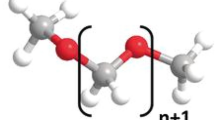Zusammenfassung
In the framework of the “New Vehicle and System Technologies” technical programme funded by the German Federal Ministry of Economic Affairs and Energy, methyl-ether based fuels (DME/OME1) were investigated in the “XME Diesel” project in order to study their potential of being sustainable fuel replacements for diesel engine applications in passenger cars and commercial vehicles. In studies, which covered research activities from fundamental spray investigations over single- and multi-cylinder testing up to vehicle demonstrators, the new fuels were studied with regard to emission formation, efficiency and compatibility to conventional diesel engine technology. Here, promising findings regarding emission reduction (soot-free combustion and reduction of nitrogen oxides) and increased efficiency could be obtained. For the first time, a heavy-duty OME1 based full engine was developed in which the emission-reducing potential of methyl ethers could be demonstrated.
Access this chapter
Tax calculation will be finalised at checkout
Purchases are for personal use only
Preview
Unable to display preview. Download preview PDF.
Similar content being viewed by others
Literatur
Arcoumanis, Constantine & Bae, Choongsik & Crookes, Roy & Kinoshita, Eiji. (2008). The potential of di-methyl ether (DME) as an alternative fuel for compression-ignition engines: A review. Fuel. 87. 1014-1030. https://doi.org/10.1016/j.fuel.2007.06.007.
Tamor M. (2017) A pragmatic approach to deep reduction in U.S. CO2 emissions. In: Liebl J., Beidl C. (eds) Internationaler Motorenkongress 2017. Proceedings. Springer Vieweg, Wiesbaden
Landälv, I., Gebart, R., Marke, B., Granberg, F., Furusjö, E., Löwnertz, P., Öhrman, O. G, Sørensen, E. L. and Salomonsson, P. (2014), Two years experience of the BioDME project—A complete wood to wheel concept. Environ. Prog. Sustainable Energy, 33: 744-750. https://doi.org/10.1002/ep.11993
“Well-to-Wheels Analysis of Future Automotive Fuels and Powertrains in the European Context” Version 4, (Report EUR 26028 EN - 2013), https://iet.jrc.ec.europa.eu/about-jec/downloads
FVV-Abschlussbericht “Kraftstoffstudie-Zukünftige Kraftstoffe für Verbrennungsmotoren und Gasturbinen”, Heft 1031, 2013
Westbrook, C.K., Pitz, W.J., and Curran, H.J., “Chemical kinetic modeling study of the effects of oxygenated hydrocarbons on soot emissions from diesel engines,” The journal of physical chemistry. A 110(21):6912–6922, 2006, https://doi.org/10.1021/jp056362g.
Barrientos, E.J., Lapuerta, M., and Boehman, A.L., “Group additivity in soot formation for the example of C-5 oxygenated hydrocarbon fuels,” Combustion and Flame 160(8):1484–1498, 2013, https://doi.org/10.1016/j.combustflame.2013.02.024.
Lefebvre, A.H., “Atomization and Sprays”, Hemisphere Publishing Corporation, New York, 1989
Ottenwaelder, T. and Pischinger, S., “Effects of Biofuels on the Mixture Formation and Ignition Process in Diesel-Like Jets,” SAE Technical Paper 2017-01-2332, 2017, https://doi.org/10.4271/2017-01-2332
Zubel, M, Zwischenbericht „XME-Diesel”, FVV Herbsttagung 2017
Fischer, S. L., Dryer, F. L. and Curran, H. J. (2000), The reaction kinetics of dimethyl ether. I: High temperature pyrolysis and oxidation in flow reactors. Int. J. Chem. Kinet., 32: 713-740. https://doi.org/10.1002/1097-4601(2000)32:12%3c713::aidkin1> 3.0.CO;2-9
Broeke, Bas ten: Technical Exchange XME-Diesel Partners with Prins-Westport, 2018
Graziano, B., Heuser, B., Kremer, F., Pischinger, S. et al., “The Oxidation Potential Number: An Index to Evaluate Inherent Soot Reduction in D.I. Diesel Spray Plumes,” SAE Int. J. Engines 9(1):222-236, 2016, https://doi.org/10.4271/2015-01-1934
Teng, H. and McCandless, J., “Comparative Study of Characteristics of Diesel-Fuel and Dimethyl-Ether Sprays in the Engine,” SAE Technical Paper 2005-01-1723, 2005, https://doi.org/10.4271/2005-01-1723
Author information
Authors and Affiliations
Editor information
Editors and Affiliations
Rights and permissions
Copyright information
© 2020 Springer Fachmedien Wiesbaden GmbH, ein Teil von Springer Nature
About this paper
Cite this paper
Gaukel, K. et al. (2020). (Bio-)Methyl ethers as alternative fuels in bivalent Diesel combustion. In: Bargende, M., Reuss, HC., Wagner, A. (eds) 20. Internationales Stuttgarter Symposium . Proceedings. Springer Vieweg, Wiesbaden. https://doi.org/10.1007/978-3-658-29943-9_48
Download citation
DOI: https://doi.org/10.1007/978-3-658-29943-9_48
Published:
Publisher Name: Springer Vieweg, Wiesbaden
Print ISBN: 978-3-658-29942-2
Online ISBN: 978-3-658-29943-9
eBook Packages: Computer Science and Engineering (German Language)




